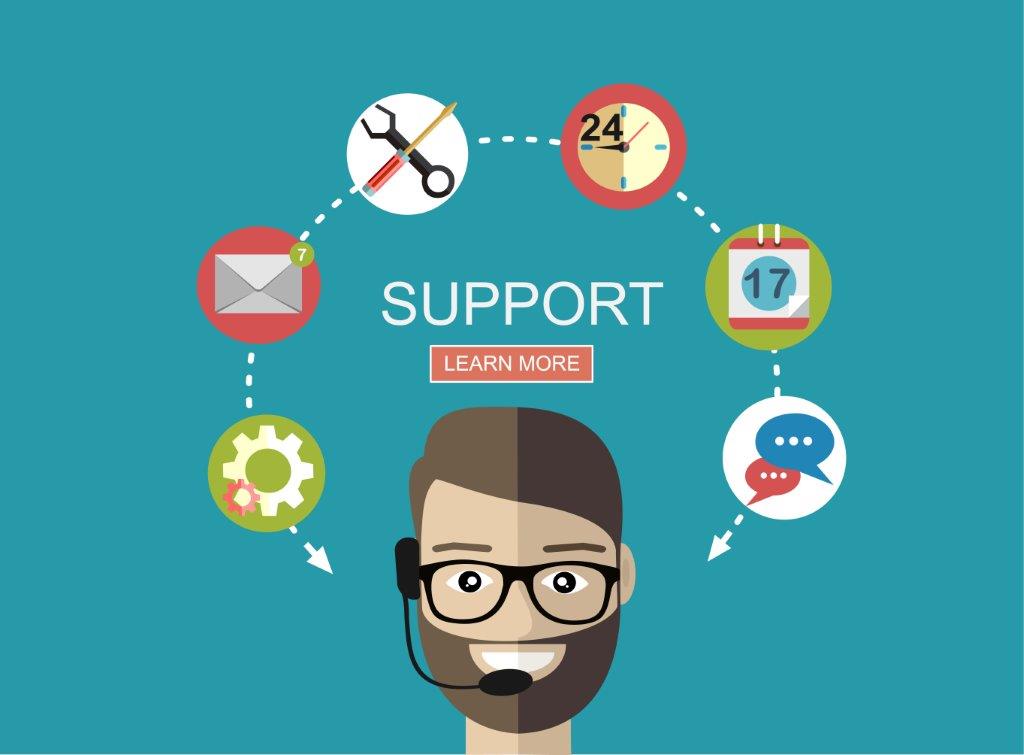There are five necessary steps for integrators that intend to provide Support
Why do so many AV integrators spend their time and resources selling projects and nothing else? Projects come and go, and when they go, you need to refill the hopper with more projects. Projects clog up the warehouse, tie up capital, and consume valuable resources – often with a lot of drama and chaos. So why do integrators place such high value on the “project” and make it their only focus? Why do they measure and pay their sales team on projects alone? Maybe it’s just what they know the best and it “feels right”.
But what if you could acquire a client and keep them for years? What if you could provide asset tracking, equipment refresh cycles, and predict equipment failures that provide true value to your client–like a partner should? What if it was profitable work that keeps your client using the systems you installed, eliminates buyer’s remorse, and sets you up to be their trusted advisor?
Many integrators tell clients at project closeout to “call us if something breaks because that’s part of the workmanship or equipment warranty”- completely ignoring the opportunity to provide partner-like value through a Support Agreement. Support Agreements go way beyond what our industry tends to call “service”.
Here are some of the services Support might include:
Reactive(Client initiated) |
Proactive(Integrator initiated) |
Monitoring
|
Value-Added Services
|
| Onsite Service Calls | Event Support | 24 X 7 equipment monitoring | Cloud-based VTC |
| Phone Support | Embedded Employee (on-site) | Usage report | Digital Signage Hosting |
| Preventive Maintenance | Asset tracking | Digital Signage Content Creation | |
| Network Analytics |
There’s been much written about how important and profitable service and recurring revenue can be, but not much about how to provide what the client needs. There are five steps necessary if you really intend to provide Support to your client.
They are fairly simple-but not necessarily easy-to do. Here is an overview:
Step One:
Organize and recognize what you actually sell your client. For example, most companies track their Service Contracts based upon the project that contained the equipment. This is a mistake because all the data is associated with the “project” and project data is good only until you close the job. After that, systems could be modified individually by another project. Control code, DSP files, drawings, etc. seldom get updated at the original project level, and newer versions often live with the new project. After a year, when the client requests a change, good luck finding the most current data.
Step Two:
Organize the products you sell as systems, not projects. Batch them in groups of equipment that are used as a system and where a support event could occur. This is best done at the quote or proposal stage. These are the “product units” you sell-not the equipment you install. They are systems, such as Conference Room A, Conference Room B, Auditorium, etc. As individual systems, you can assign them numbers and track them. System ID numbers (SID) should be unique-not including a project or client number. Organize project data into system data, and store it under the System ID. Label equipment with SIDs and include your tech support hotline number:

Step Three:
Organize and file the documentation. At project closeout, store all system-related data by System ID, including PDF drawings (schematic flows, floor plans, reflected ceiling plans, rack elevations), pictures of the space, DSP files, and touchpanel screen shots. This will make data quick and easy to find. File any building or site-related data (control system code, AutoCAD drawings, etc.) one level up since they are not system-related.
Step Four:
Integrate this methodology into your support tickets. With Systems documentation stored by SID, you can reference the System in your service ticketing system. A ticket history based upon SID lets you have different SLA’s for the same client (even in the same building) because they are assigned to the SID, not the project. For example, a building with 20 Huddle Rooms and an Executive Briefing Center could give the Huddle Rooms one PM visit a year with 48 hour onsite response time, and the Executive Briefing Center could get four PM visits per year with 24 hour onsite response time, all held under the same contract, as shown here:

Step Five:
Set up a tiered Support structure (by SID) that shows the level of support your clients will get. This is what they are used to seeing from other types of providers, notably IT. Clients want an escalation path, the possibility of solving problems over the phone, and a knowledgeable place to call where the provider cares about their support issue. They want that contact to be informed and prepared to support them quickly, all of which you have now enabled.
Admittedly, this is a lot of work so if you want it done in weeks rather than months, let Navigate help. You can implement a Support Program if you see its compelling benefits and really want to do it. Watch for Part Two in this series for more on how in a future issue. Call us for more information and assistance.
Questions? Other viewpoints? We’d love to hear them. Contact us at: answers@navigatemc-com.lyricalstaging.com





